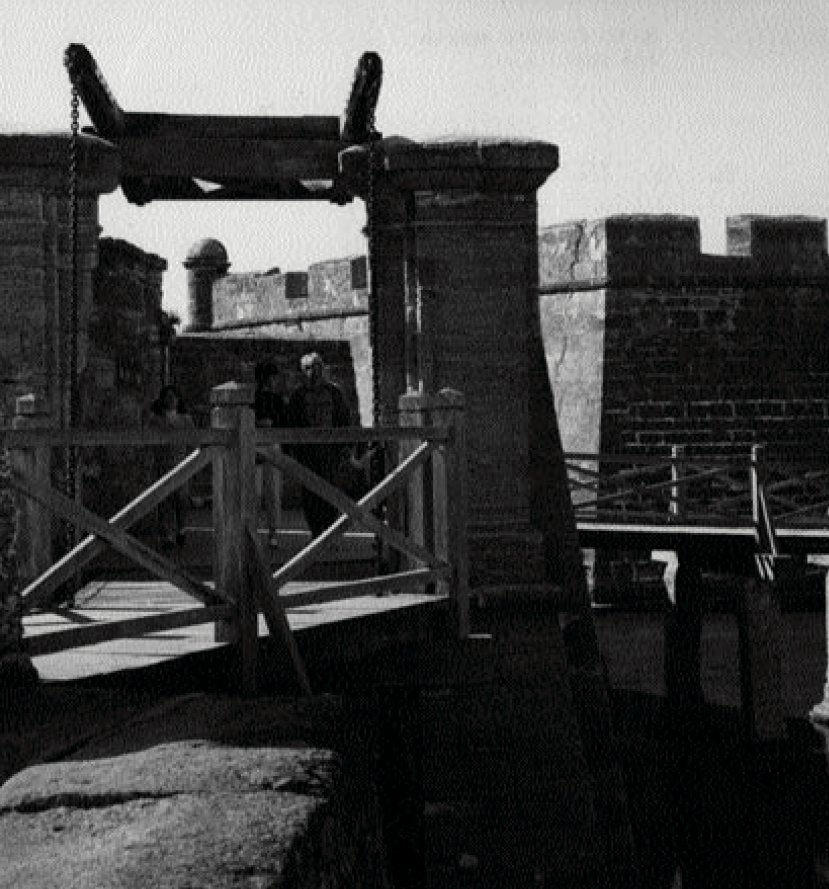Castillo de San Marcos (1672-95/1738-62) at the Mantanzas River St. Augustine, Florida
The Spanish, who were the first Europeans to settle permanently in what came to be the United States, made several determined but futile efforts to set up shop on the New World’s mainland before finally establishing a base at St. Augustine in 1565. (Spain was well organized in the West Indies by the early decades of the sixteenth century, having built a fort and town— Isabela, now in the Dominican Republic—following Christopher Columbus’s second voyage in 1494.)
Juan Ponce de Leon, who had settled in Puerto Rico (1508), landed in Florida with colonists and cattle near present-day Charlotte Harbor (1521) but Native Americans soon drove him back. In 1526 Spain took five hundred men, women, children, slaves, and animals to Winyah Bay near Georgetown, South Carolina, but they, too, because of Native Americans, disease, and bad winter, were forced to return to their West Indian base.

The Spanish, alarmed by the French Fort Caroline (1564) at the mouth of the St. John’s River (near today’s Jacksonville), wanted a fortified settlement in Florida to prevent further European incursions. The struggle for bases in Florida was initially between the Spanish and French, but the English burned St. Augustine in 1586, and then continued to move southward down the coast. To counter this movement, the Spanish ordered the construction of an impregnable stone fort (previous ones of wood were of short life and little value). Work began in 1672 and it lasted for many arduous years.
Massive, businesslike, yet strangely elegant, the Castillo de San Marcos (at one time called “Fort Marion”) stands as the finest and oldest example of military architecture in the United States. The star-shaped Castillo was designed by Ignacio Daza; it was probably inspired by the principles for bastioned fortifications worked out by Francesco de Marchi (1490-1574) and modified by Italo-Spanish and Dutch examples—with perhaps additional influence from Sebastien de Vauban, whose first Memoire appeared in 1669. It was as successful as it is handsome, never having been taken in battle—though bitterly besieged—and was used as recently as the Spanish-American War to house disciplinary cases.

The fort, which is constructed of coquina, the local shell-based marine stone, was built on the edge of Matanzas Bay around a square courtyard with four-sided, spearlike bastions projecting diagonally at each corner. A 40-foot-/12-meter-wide moat surrounds the whole. The thickness of the scarp, or outer wall, ranges from 13 feet/4 meters at base to nearly 5 feet/1.5 meters at the top of the parapet, which is approximately 30 feet/9.1 meters above the moat. (Until the 1738-40 strengthening, the walls were only 20 feet/6.1 meters high.) To provide sustenance against siege, wells were dug in the courtyard and several of the fort’s twenty rooms were used for storing food. The garrison and the people of the village were to rely on these on several desperate occasions.
Modernization of the fort was carried out in three stages: 1738-40, when the previously wooden gun deck, or terreplein, on the east side was replaced by arched masonry walls that could withstand bombardment; 1752-56, when the other three sides were vaulted; and 1762, when the ravelin (a triangular outwork) in front of the gate was enlarged. The fort was made a national monument in 1924, and today, thanks to the National Park Service, is in grand shape. One of the world’s great forts, it is among the chief secular inheritances of the Spanish occupation in the United States.
Date added: 2025-08-01; views: 218;
